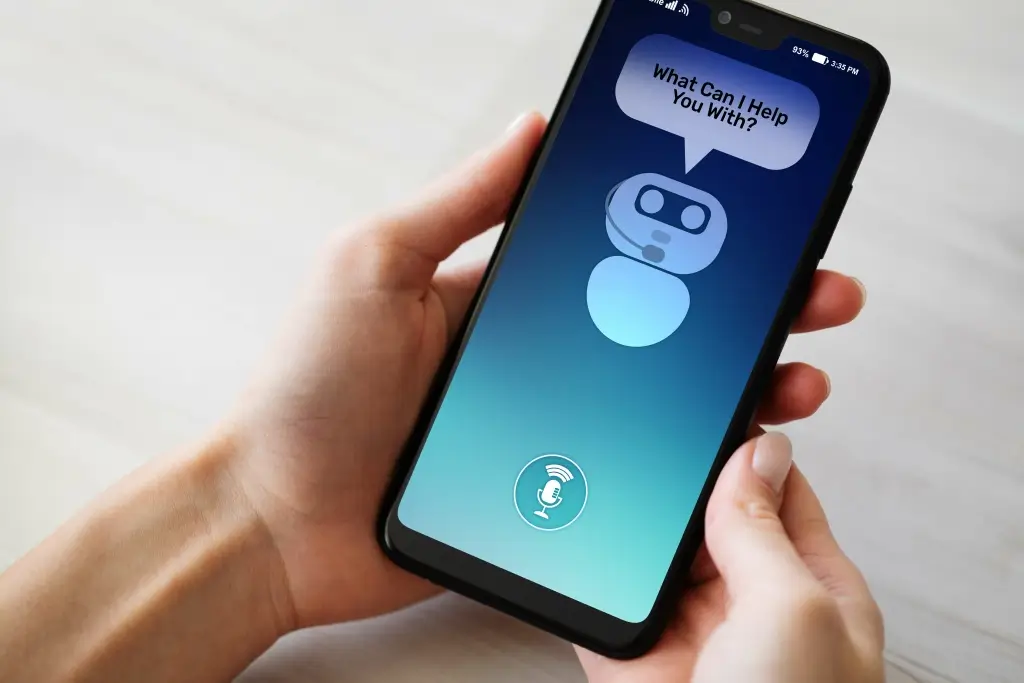Exploring the pedagogical uses of AI chatbots
The results of the evaluation studies (Table 12) point to various findings such as increased motivation, learning, task completeness, and high subjective satisfaction and engagement. In comparison, chatbots used to teach languages received less attention from the community (6 articles; 16.66%;). Interestingly, researchers used a variety of interactive media such as voice (Ayedoun et al., 2017; Ruan et al., 2021), video (Griol et al., 2014), and speech recognition (Ayedoun et al., 2017; Ruan et al., 2019).
Data loss prevention vendors tackle gen AI data risks – CSO Online
Data loss prevention vendors tackle gen AI data risks.
Posted: Tue, 31 Oct 2023 09:00:00 GMT [source]
The UK Cabinet wanted to run a campaign to reach out to students, especially from underrepresented sections of society, and encourage them to take more interest in STEM studies. They wanted to shorten their sales cycle, handle the constant influx of queries, and integrate their engagement system with their existing marketing software to store leads. Schools and universities have two important factors other than their three bases, i.e. The data that support the findings of this study are available from the corresponding author upon reasonable request.
How Chatbots For Insurance Are Being Used In 2022
The software answers questions without needing a person to write or send those answers at any time or day. Chatbots in education are equipped to unburden them by automating and covering repetitive tasks. This way teachers can focus on providing quality education and tracking their student’s progress. Fryer and Carpenter did an experiment where 211 students were asked to chat with ALICE and Jabberwocky chatbots. In fact, 85% of them admitted to having felt more comfortable and relaxed conversing with the bots over a student partner or teacher as in classical teaching. Being an integral part of the e-learning system, the education bot can send automated reminders to students about upcoming exams and submission dates, as well as registration deadlines for courses.
Incorporating AI chatbots in education offers several key advantages from students’ perspectives. AI-powered chatbots provide valuable homework and study assistance by offering detailed feedback on assignments, guiding students through complex problems, and providing step-by-step solutions. They also act as study companions, offering explanations and clarifications on various subjects. They can be used for self-quizzing to reinforce knowledge and prepare for exams. Furthermore, these chatbots facilitate flexible personalized learning, tailoring their teaching strategies to suit each student’s unique needs.
About this article
However, there have been contradictory findings related to critical thinking, learning engagement, and motivation. Deng and Yu (2023) found that chatbots had a significant and positive influence on numerous learning-related aspects but they do not significantly improve motivation among students. Contrary, Okonkwo and Ade-Ibijola (Okonkwo & Ade-Ibijola, 2021), as well as (Wollny et al., 2021) find that using chatbots increases students’ motivation. Moreover, according to Cunningham-Nelson et al. (2019), one of the key benefits of EC is that it can support a large number of users simultaneously, which is undeniably an added advantage as it reduces instructors’ workload.
- Concerning the evaluation methods used to establish the validity of the approach, slightly more than a third of the chatbots used experiment with mostly significant results.
- Only one study pointed to high usefulness and subjective satisfaction (Lee et al., 2020), while the others reported low to moderate subjective satisfaction (Table 13).
- Users should be cautious about the information generated by chatbots and not rely solely on them as sources of information.
- The chatbot used pattern matching to emulate a psychotherapist conversing with a human patient.
It was observed that communicating merely was not the main priority anymore as cooperation towards problem-solving is of utmost importance. Example feedback is such as “I learn to push myself more and commit to the project’s success.” Nevertheless, in both groups, all the trends are almost similar. The instruments were rated based on the Likert scale ranging from 1 (strongly disagree) to 5 (strongly agree) and administered using Google Forms for both groups.
AI can support many important needs in education, such as acquiring insight through data analysis, automating processes and interacting with students and staff. There are already numerous examples where AI is already being used in the education sector. By succeeding with AI, students should be able to learn better and faster. Adding AI technologies change with the students’ learning process to create an opportunity to educate students of all learning styles. By constantly being available, during and after lectures to answer queries and allowing students and teachers to virtually exchange information about lectures, assignments, deadlines, presentations and other events and activities. They can also use this platform to create alumni groups and various activity clubs.
For instance, Winkler and Söllner (2018) classified the chatbots as flow or AI-based, while Cunningham-Nelson et al. (2019) categorized the chatbots as machine-learning-based or dataset-based. In this study, we carefully look at the interaction style in terms of who is in control of the conversation, i.e., the chatbot or the user. A conversational agent can hold a discussion with students in a variety of ways, ranging from spoken (Wik & Hjalmarsson, 2009) to text-based (Chaudhuri et al., 2009) to nonverbal (Wik & Hjalmarsson, 2009; Ruttkay & Pelachaud, 2006). Similarly, the agent’s visual appearance can be human-like or cartoonish, static or animated, two-dimensional or three-dimensional (Dehn & Van Mulken, 2000).
Furthermore, as for constructive feedback, the outcomes for both groups were very similar as the critiques were mainly from the teammates and the instructor, and the ECs were not designed to critique the project task. Firstly, Kearney et al. (2009) explained that in homogenous teams (as investigated in this study), the need for cognition might have a limited amount of influence as both groups are required to be innovative simultaneously in providing project solutions. Lapina (2020) added that problem-based learning and solving complex problems could improve the need for cognition. Hence, when both classes had the same team-based project task, the homogenous nature of the sampling may have attributed to the similarities in the outcome that overshadowed the effect of the ECs. Equally, for motivational belief, which is the central aspect needed to encourage strategic learning behavior (Yen, 2018).
The AI wars – Asia News NetworkAsia News Network – asianews.network
The AI wars – Asia News NetworkAsia News Network.
Posted: Wed, 18 Oct 2023 02:27:49 GMT [source]
Therefore, the objective of this study is first to address research gaps based on literature, application, and design and development strategies for EC. Next, by situating the study based on these selected research gaps, the effectiveness of EC is explored for team-based projects in a design course using a quasi-experimental approach. With the exponential growth in the mobile device market over the last decade, chatbots are becoming an increasingly popular option to interact with users, and their popularity and adoption are rapidly spreading. These mobile devices change the way we communicate and allow ever-present learning in various environments. This study examined educational chatbots for Facebook Messenger to support learning.
Institutions seeking support in any of these areas can implement chatbots and anticipate remarkable outcomes. Multilingual chatbots act as friendly language ambassadors, breaking down barriers for students from diverse linguistic backgrounds. Their ability to communicate in various languages fosters inclusivity, ensuring that all students can learn and engage effectively, irrespective of their native language. Through this multilingual support, chatbots promote a more interconnected and enriching educational experience for a globally diverse student body. So, many e-learning platforms are using chatbots to instantly share students’ course-related doubts and queries with their respected teachers and resolve the problems at the earliest.

As you can see, the answers are predetermined and encoded in the flowchart. AI aids researchers in developing systems that can collect student feedback by measuring how much students are able to understand the study material and be attentive during a study session. The way AI technology is booming in every sphere of life, the day when quality education will be more easily accessible is not far. AI chatbot for education handles the task and plans the course schedule according to the time slot of both the students and the teachers. It gathers all the relevant information and plans the course accordingly to support timely completion and regular interactions.
They can help the students find out about hostel facilities, library memberships, scholarships, etc and provide post-course support for any issues that would need to be solved on a priority basis. These tutoring systems can also cater to the needs of neurodivergent students who may have learning disabilities and help all students understand difficult topics and subjects by customising their learning plans. A lecture can also be turned into a series of messages to make it look like a standardised chat conversation to help students feel comfortable asking questions and improve the overall concentration level by increasing engagement.
A good example is Duolingo that has been investing in AI and machine learning to make language learning more engaging by automatically tailoring lessons to each individual — kind of the way a human tutor might. The chatbot assesses every student’s level of understanding and then provides them with the following parts of a lecture according to their progress. And because data is constantly collected along the way, the chatbot can identify the skills students need to work on to increase their score and will suggest practicing the skill again.
Italy became the first Western country to ban ChatGPT (Browne, 2023) after the country’s data protection authority called on OpenAI to stop processing Italian residents’ data. They claimed that ChatGPT did not comply with the European General Data Protection Regulation. However, after OpenAI clarified the data privacy issues with Italian data protection authority, ChatGPT returned to Italy.

If students don’t understand a mathematical operation, they can ask ChatGPT to explain it and give examples. As in higher education, chatbots could ‘deliver’ an exam to students in early childhood education. If the chatbot is a lovely, friendly figure, the experience of taking one of these tests is more relaxed. A chatbot maintains a conversation between humans and software through a web page or a messaging service (Telegram, WhatsApp, Facebook Messenger…).
- Peer agents allowed students to ask for help on demand, for instance, by looking terms up, while teachable agents initiated the conversation with a simple topic, then asked the students questions to learn.
- To cater to the needs of every student in terms of complex topics or subjects, chatbots can customize the learning plan and make sure that students gain maximum knowledge – in the classroom and even outside.
- It showcased the potential of chatbots to handle complex, real-time interactions in a human-like manner (Dinh & Thai, 2018; Kietzmann et al., 2018).
- While chatbots serve as valuable educational tools, they cannot replace teachers entirely.
Read more about https://www.metadialog.com/ here.
